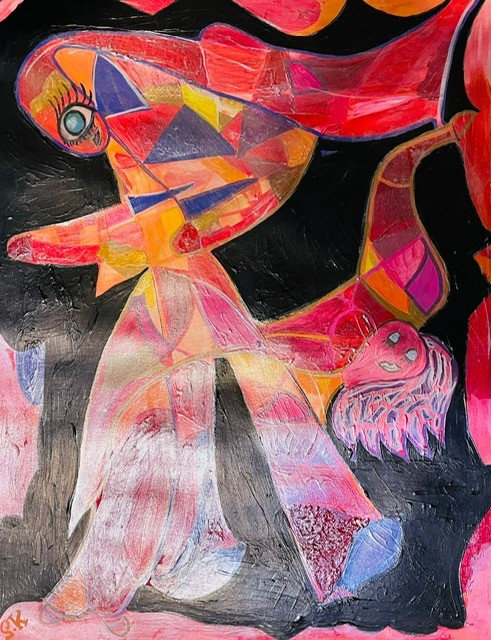
The Benefits of Getting Creative
Creative activities, as well as being interesting, pleasing and worthwhile in themselves, can be a tool for mental wellbeing. Getting creative offers us a way to channel difficult feelings into something external, helping us to feel more in control. The process is more important than the actual outcome. We don’t need to be a budding Rembrandt or Van Gogh to gain the therapeutic benefits of art—in fact, we don’t need any artistic skill at all. Hover over the tree and click through to discover more.
Our Creative Tree resource is a hub of links, activities, and information designed to help you explore the healing power of artistic practice for your mental health.
Creativity offers us a quiet, non-judgmental space to process intense emotions and find a moment of peace.
Explore the Creative Tree and See What You Discover
Please explore the links and activities we’ve gathered on our new Creative Tree. Give yourself the gift of a creative outlet and see where your own process might lead.
Hover over the tree and click through to visit the link.
Sabine’s Story: Art as Therapy
The Creative Tree was made possible through the collaboration and insight of one of our Experts by Experience, Somerset artist Sabine Kramer, who uses her own creative practice to manage her mental health.
Sabine says, “People need to know there’s hope, and it is possible to self-manage your mental health and move beyond survival mode.” She has found that creative practice can help us to:
- Release Difficult Emotions: Creativity acts as an outlet, enabling us to feel “calm and content“.
- Improve Focus: Engaging our hands and minds can provide a much-needed break from overwhelming thoughts, allowing our minds to settle. Sabine says, “When I’m poorly, creativity or studying helps to stop my mind racing and to focus at the task at hand. This applies to many people with mental health issues who need a tool to regain focus.”
- Gain Understanding: Often, a piece of art or writing can “evolve into a meaning, something I experience,” helping us to better understand our own internal world.
- Support Recovery: Creative work can be a stepping stone in recovery, helping us to overcome obstacles like agoraphobia or social anxiety. “I suffered with severe insomnia for a long time,” Sabine recalls, “and I painted all night long. Art became a coping tool and a saviour—it helped me get through the night until I was able to find the wider support I desperately needed.“
“Art has been my therapy since suffering psychosis following the birth of my baby in 2010. I believe I started painting late in 2011, when I was weaned off medication. I experience art through my emotions and subconscious mind.”
“My painting comes as an outburst and subsequently channelling my emotions into creativity, enabling me to feel calm and content—as if my ‘happy-hormones’ are having a party again.”
Artistic creation can help us manage difficult and confusing internal experiences. For Sabine, the intensity of her experience can sometimes be hard to communicate through words: “There are situations where I say something, which is not compatible with what I think. Or I thought I spoke, but I kept silent. Therefore, communication can be quite difficult.”
In these moments, art offers a route to expression:
“The process is important for my health and wellbeing, thus more important than the actual outcome. Creativity is in all of us, but we are conditioned to believe we need artistic talent. There should be no restrictions in trying to express yourself, whether that’s through painting, collage, or modelling.”
Sabine uses her work to raise awareness of postpartum psychosis and the value of vibrant and emotional paintings in the creation of therapeutic environments in clinical settings. “Creativity is one key strength for offering a wellbeing hub. It helps people come out of their shell and creates a vital sense of belonging within a group.”
Furthering the Creative Journey
Sabine’s work explores the relationship between creativity and mental health. She holds a professional qualification in art therapy from the Centre of Excellence and regularly engages in other wellness activities, which she considers part of her toolkit for maintaining her health.
Sabine’s experience, combined with her qualification in art therapy, gives her an insight into how we can all use colour, texture, and expression to feel heard, even when we struggle to voice our feelings. To see more of her work, check out Sabine’s website.


Links
https://outsidein.org.uk
https://www.somersetft.nhs.uk/art-for-life
https://hospital-rooms.com/
https://quietplacesathome.online
https://www.mindinsomerset.org.uk/our-services/art-groups
https://www.mind.org.uk/arts
https://www.supercoloring.com/
https://health-in-mind.org.uk/
https://healthconnectionsmendip.org/